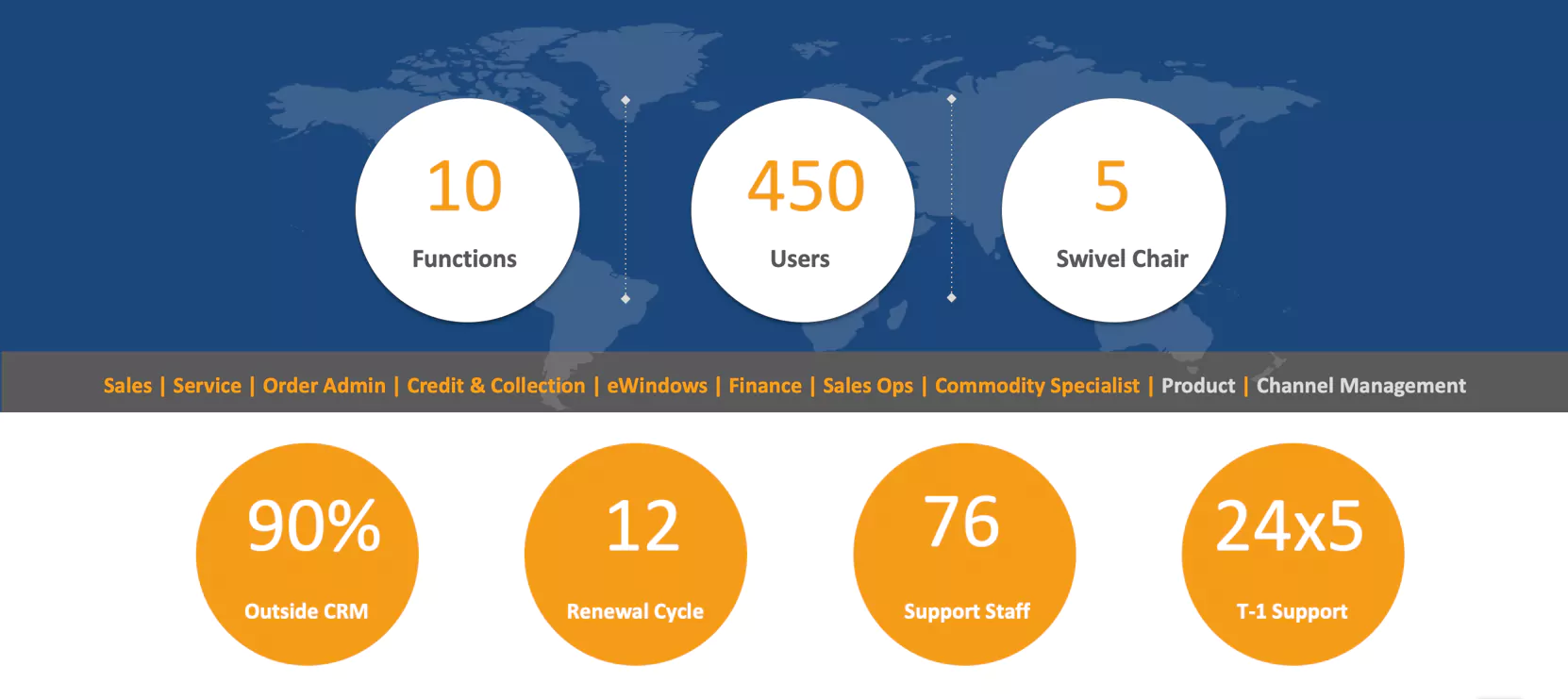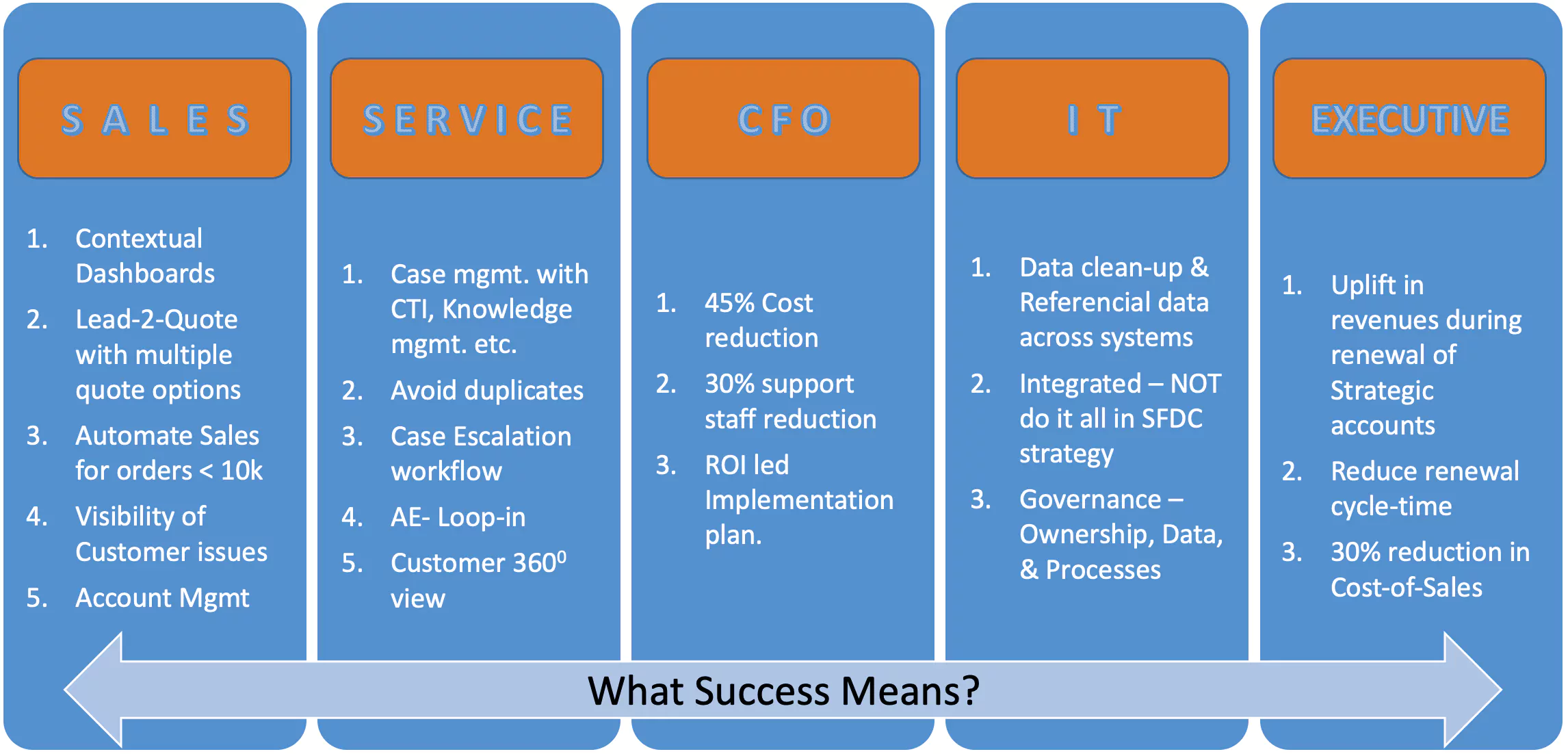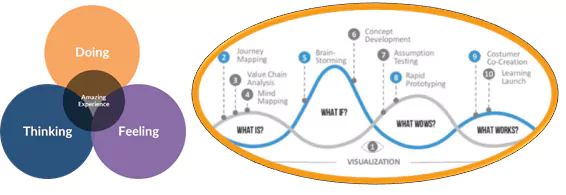The client is the leading independent provider of information, benchmark prices, and analytics for the energy and commodities markets. Traders, analysts, risk managers, purchasing agents, and other professionals at more than 12,000 public and private sector organizations in over 190 countries benefit from the client’s services. It has thousands of customers but a handful of global strategic accounts. The sales and service teams were using Oracle CRM and had a significant day to day challenges in doing their job. The operational productivity was low, and the costs of sales and service were high.
The key challenges were:
- There were five manual (swivel chair) operations.
- One single Sales process was implemented for three different sales teams.
- Service processes team was using Oracle only as a ticket management system and had third-party company manually removing duplicate tickets.
- The costs of sales were very high.
- The contract renewal process of global strategic accounts was 12 months giving more opportunities for customers to negotiate lower prices.
About Client
The client is headquartered in London and employs over 1,200 people in more than 19 offices worldwide located in global business and energy centers on five continents. For over 100 years, they have brought clarity and transparency to the energy and commodities markets, enabling companies, governments, and individuals to act with conviction.
They know that data is a key to decision making, but information alone isn't informative; it can be interpreted in many ways and inform drastically different decisions. The knowledge and experience of the people make the difference, offering insight that helps customers in 190 countries to interpret fluctuations, uncover new commercial opportunities, and gain a competitive edge. From an original focus on petroleum, they now cover oil, natural gas, LNG, electric power, coal, shipping, petrochemicals, metals, and agriculture.
Solution from Bolt Today
Bolt Today was engaged in doing the initial assessment and recommending the right solution and tools. The customer understanding was that Oracle CRM is not used much, but the assessment revealed that there were over 10 functional departments and 450 users using Oracle.
The below diagram shows the analysis by numbers which was eye-opening to the stakeholders:

Bolt Today CRM experts conducted interviews of five key stakeholders and documented the success metrics. What success meant, was very different to each one of them.

Bolt Today designed the solution that focused on four key aspects:
- Process optimization across ten functional areas
- Implementation plan based on a business blueprint that was linked to stakeholders success metrics
- Integration and automation to reduce manual efforts
- Zero-touch sales for small and medium accounts
Bolt Today Approach for Creating Business Blueprint
We believe that an objective, fact-based analysis of Platts’s current environment is the cornerstone of a CRM solution that integrates well into its existing technology landscape. Bolt Today’s design-driven approach is based on the concepts shown in Figure 1.

Our approach involves understanding the user experience, not just from a “doing” perspective, but more importantly aligned with the human behaviors of thinking and feeling. These aspects of customer behavior drive adoption. Design-led thinking provides a more tactical business transformation. The process we follow defines a set of initiatives and the ROI that drive this transformation.
What is?
We ask this question to provide insights into the current working environment and document the business processes that drive the user experience. At Platts, we believe that they want to have standardized core CRM processes across the lines of business and our mind-mapping technique helps to map the current processes and provides the insights on achieving standardization. Furthermore, this technique helps document business knowledge embedded deep inside experienced employees that may otherwise be lost.
What if?
This is a critical question in ensuring that users are heard and possibilities explored. “What if?” untethers the mind and explores possibilities. Answers provide insights into how existing pain points can be addressed, what opportunities exist, and what value they can provide to the business.
What wows?
Answers at this step narrow the possibilities to the few that excite the most, the or the ones with the biggest bang. They postulate business outcomes including the maximum value toward business transformation. At this step we would provide rapid prototyping to vet ideas across PCL’s three lines of business and provide them the insights on possibilities for the next stage.
What works?
Our final and most important question keeps the “what ifs” and “what wows” firmly grounded on what is possible within PCL’s business environment. We examine other aspects of the organization such as, including but not limited to, long-term and short-term business objectives, enterprise capabilities in accepting and driving change, existing enterprise architecture, market dynamics, and others. The result is a set of initiatives that the organization can effectively implement. This step is critical to developing an incremental, ROI-driven implementation blueprint for future releases post the pilot.
Benefits to the Client
- Reduced operations cost by 45%
- Reduced contract renewal from 12 months to 3 months
- 5-7% Up-lift in Revenues with Strategic Accounts on renewals
- 50% case deflection with customer self-service portal
- 100% process automation and no manual (swivel chair) operation













